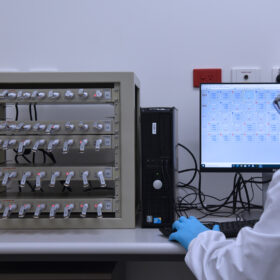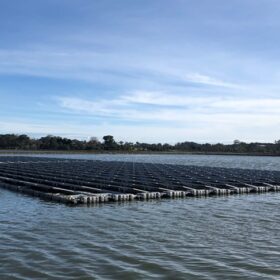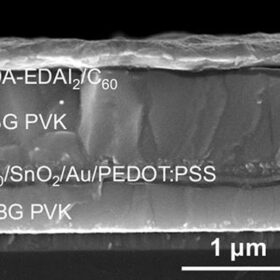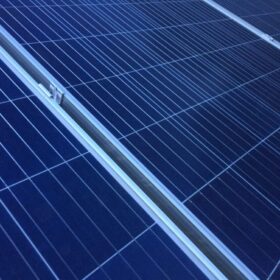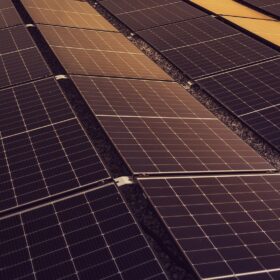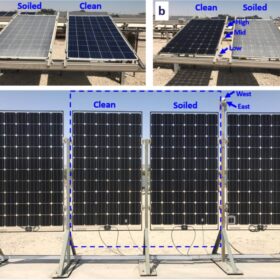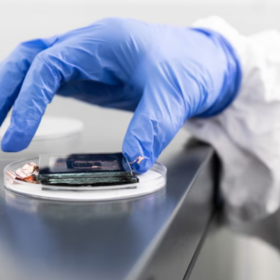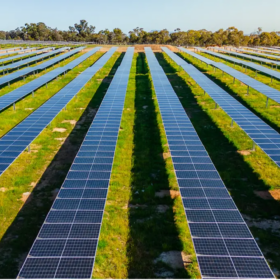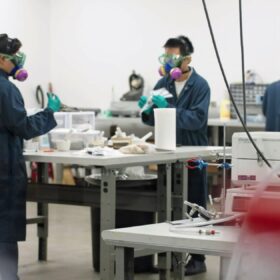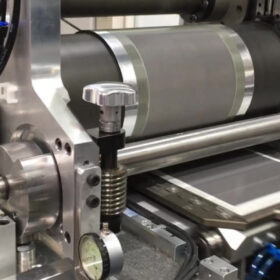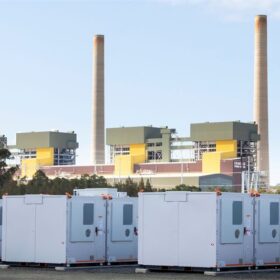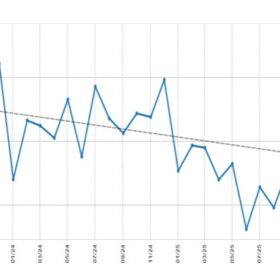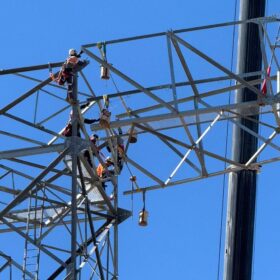Aqueous zinc-ion battery research advances biodegradable storage solution
South Australia Flinders University researchers, in collaboration with Griffith University, have published findings into aqueous zinc-ion batteries studies, as a more sustainable energy storage technology alternative to lithium-ion batteries.
UQ tech captures PFAS chemicals for re-use in batteries
Researchers at the University of Queensland have developed technology to remove harmful synthetic fluorine-based chemicals from water in order to re-purpose them for use in batteries.
Optimising bifacial solar panels for floating PV applications in tropical freshwater
New research from India shows how bifacial solar modules should be deployed to achieve strong performance in floating PV projects planned on tropical freshwater. Their experimental setup demonstrated that higher efficiency gains are achievable by gauging panel height, water depth, and tilt angle.
All-perovskite tandem solar cell based on tin-lead perovskite achieves 28.8% efficiency
Conceived by Chinese scientists, the cell was built with new surface reconstruction strategy based on the use of 1,4-butanediamine (BDA) and ethylenediammonium diiodide (EDAI2) as surface modifiers. The device was able to retain 79.7% of its initial efficiency after 550 h.
Nanoparticles, phase-change materials in PVT systems
A team of scientists has used paraffin wax integrated with aluminum oxide and zinc oxide to improve the electrical and thermal performance of a photovoltaic-thermal system. They have also developed a prediction model for this specific combination of hybrid nano-phase change materials.
Research sheds new light on shade effects for rooftop PV
Researchers have covered part of a rooftop solar plant with varying numbers of shading cloth layers and continued to measure the power, current, and voltage of the system. They have been able to identify a point after which the value of system current and maximum power is no longer sensitive to shading heaviness.
East-west vertical PV as antidote for soiling in desert regions
New research shows that east-west-oriented vertical PV installations can significantly help reduce soiling in desert environments. The scientists found that PV power generation can be up to 9% higher in vertical systems compared to conventional arrays.
Scientists set new efficiency target for monolithic perovskite-silicon tandem solar cell
Researchers at the University of Sydney have achieved 30% efficiency rating with a monolithic perovskite-silicon tandem solar cell and now have their sights set on a new target.
Renewables must ramp up to 126 GW by 2030 to reach net zero by 2050, says BNEF
Australia can still achieve a net-zero energy transformation by 2050, in line with the Paris climate agreement, but new analysis from Bloomberg New Energy Finance shows there is no time to waste with a rapid scaling up of investment in solar, wind and energy storage required.
Novonix strikes cathode materials agreement with CBMM
Australian listed battery materials and technology company Novonix has inked a joint development agreement with Brazilian niobium products supplier CBMM to produce cathode materials for use in lithium-ion batteries.

